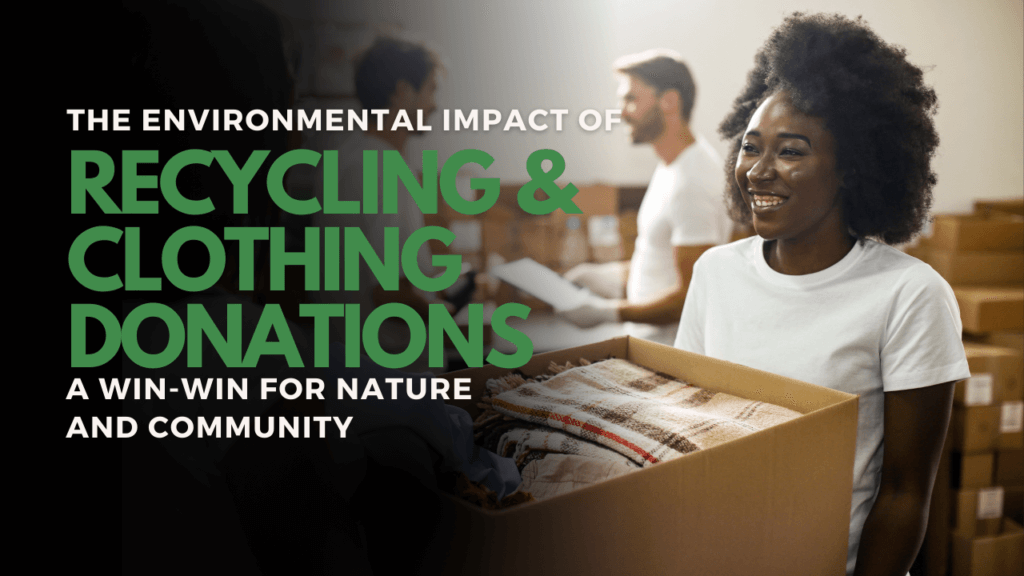In a world facing environmental challenges, every small action we take can make a significant difference. Two impactful ways individuals can contribute to both nature and community well-being are through recycling and donating clothes to those in need.
Recycling:
Recycling is a cornerstone of sustainable living, offering numerous benefits for the environment. By recycling materials such as paper, plastics, glass, and metals, we reduce the need for raw materials extraction, conserve natural resources, and decrease energy consumption. Recycling also plays a crucial role in minimizing waste sent to landfills, which helps mitigate pollution and greenhouse gas emissions.
Moreover, recycling has a ripple effect on ecosystems, preserving habitats and biodiversity. When we recycle, we lessen the demand for resource-intensive manufacturing processes that can harm ecosystems through deforestation, habitat destruction, and pollution. By choosing to recycle, we can contribute to the conservation of natural habitats and the protection of wildlife populations, ensuring a healthier planet for future generations.
Clothing Donations:
Clothing donations offer a dual benefit by addressing social needs and reducing environmental impact. Donating gently used or new clothing items to those in need helps support individuals facing homelessness or financial hardship, providing essential warmth and comfort. Additionally, donating clothes extends the lifespan of garments, diverting them from landfills and reducing textile waste.
Textile production and disposal have significant environmental consequences, including water pollution, greenhouse gas emissions, and land degradation. By donating clothes for reuse, we can mitigate these impacts by extending the lifecycle of clothing items and reducing the demand for new textiles. Furthermore, donating clothes reduces the need for incineration or landfilling, minimizing the environmental footprint associated with textile waste disposal.
In conclusion, recycling and clothing donations offer tangible ways for individuals to contribute to both environmental sustainability and community welfare. By recycling materials and donating clothes, we can reduce resource depletion, minimize waste, and support those in need. These simple yet impactful actions embody the interconnectedness of environmental and social responsibility, demonstrating that by caring for nature, we also care for our communities. Let’s continue to embrace recycling and clothing donations as powerful tools for creating a more sustainable and compassionate world for all.


